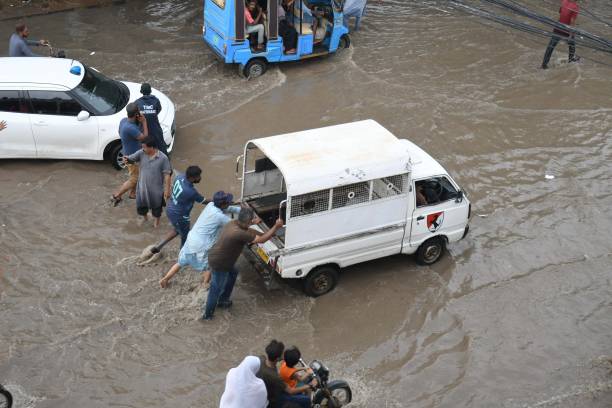Karachi Weather and Rainfall: A Comprehensive Overview
The semi-arid climate of Karachi, Pakistan’s vibrant city, is marked by scorching summers and moderate winters. Rainfall in the city is relatively low and primarily occurs during the monsoon season, which typically spans from June to September. The region’s agricultural and drinking water supplies depend heavily on the monsoon rains.

Annual Rainfall Patterns
On average, Karachi receives about 309.6 mm of rainfall annually, with the monsoon contributing approximately 237.5 mm of this total. The heaviest rainfall ever recorded in a single day was 223.5 mm on the afternoon of August 27, 2020, while the highest annual precipitation was 869 mm in 1967. July and August are typically the wettest months, with July 1967 recording the highest monthly rainfall at 429.3 mm.
Impact of Rainfall on Urban Life
In Karachi, the arrival of the monsoon rains presents both opportunities and difficulties. While the rains alleviate the scorching summer heat, they also expose infrastructural vulnerabilities. Poorly maintained drainage systems often lead to waterlogging and localized flooding, disrupting daily life. Due to historic rainfall from the monsoon in the month of August, Hyderabad saw its worst floods ever over a century.
Cultural Significance of the Monsoon
Beyond its utilitarian uses, Karachi’s monsoon season has cultural value. The simple joys of rain showers bring families together. While parents enjoy hot tea and cookies while home observing the drizzle as their youngsters joyfully play in the rainfall.
Conclusion
In conclusion, rainfall in Karachi is a vital component of the city’s climate system. While it brings much-needed relief during the hot summer months, it also presents challenges that require effective urban planning and infrastructure development. Understanding and preparing for the monsoon’s impact can help mitigate its adverse effects and enhance the city’s resilience.


